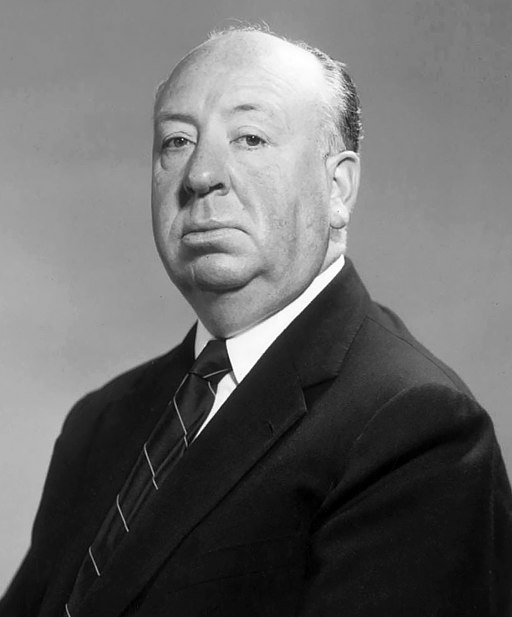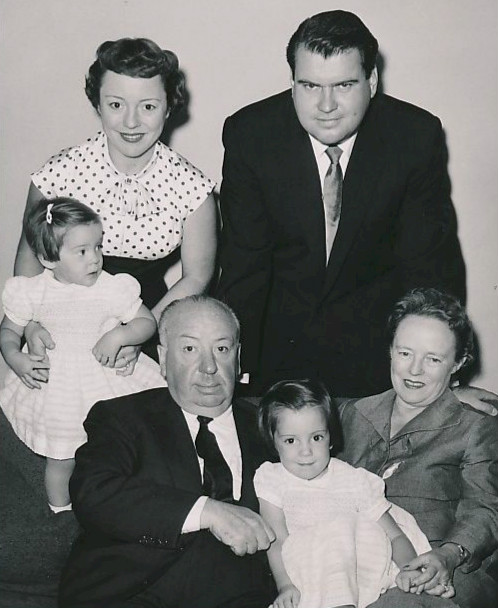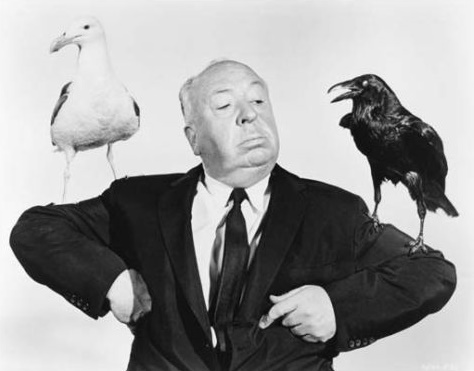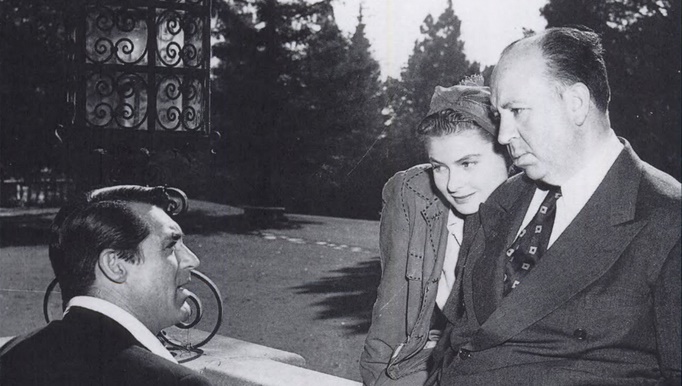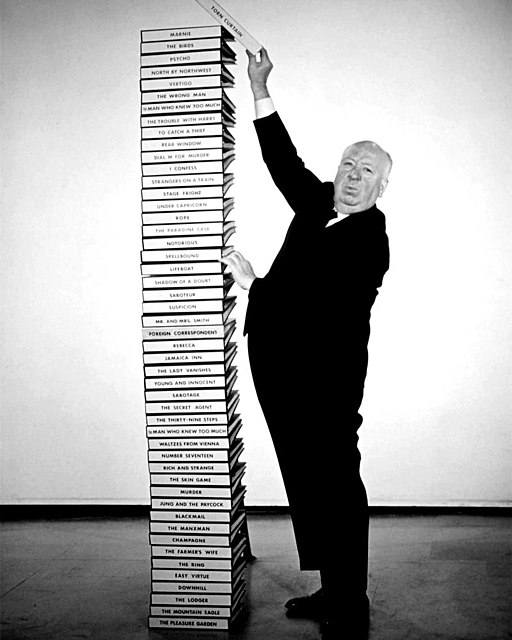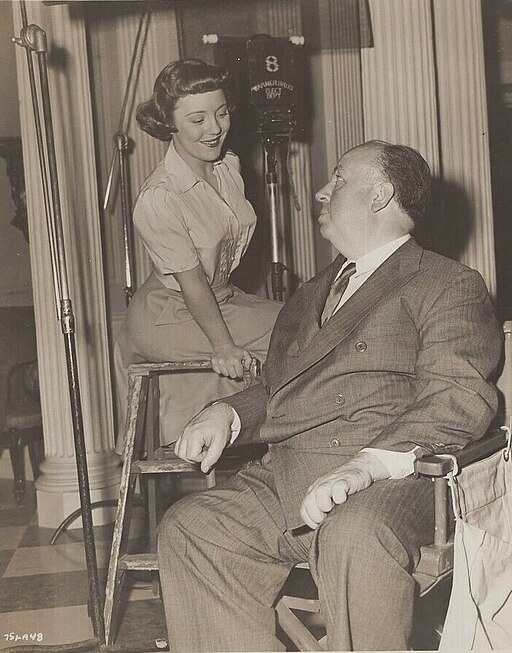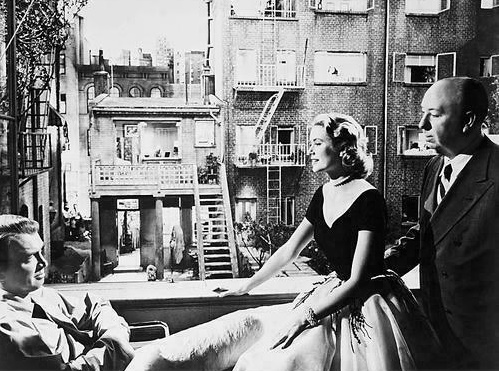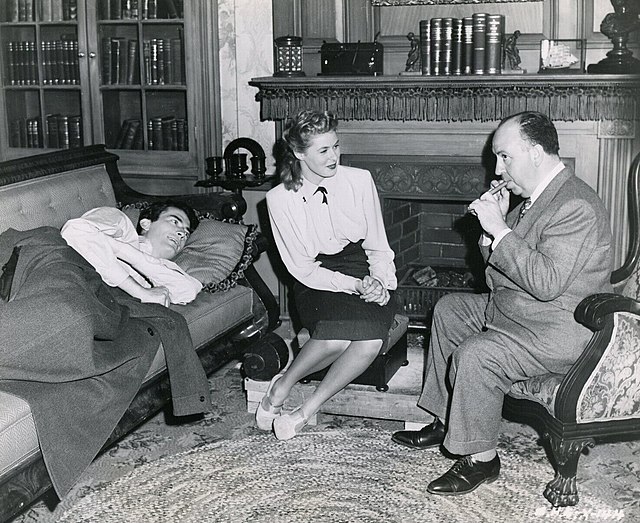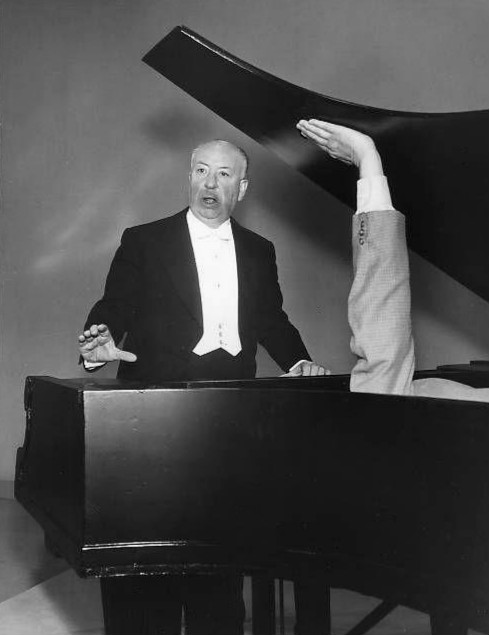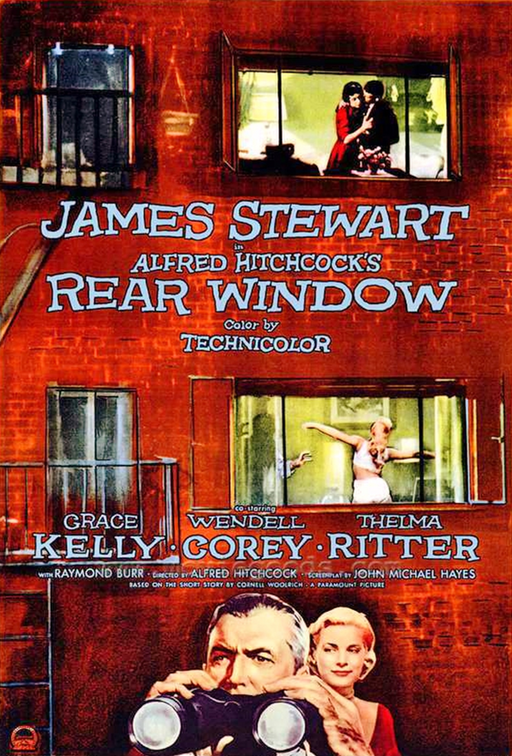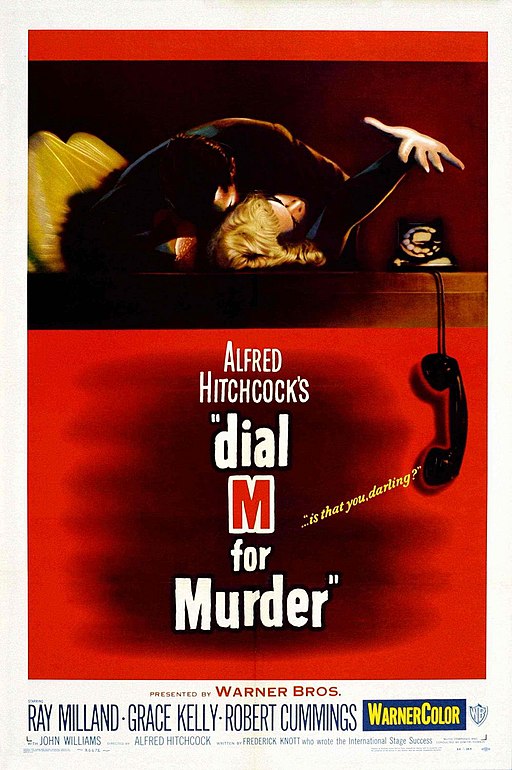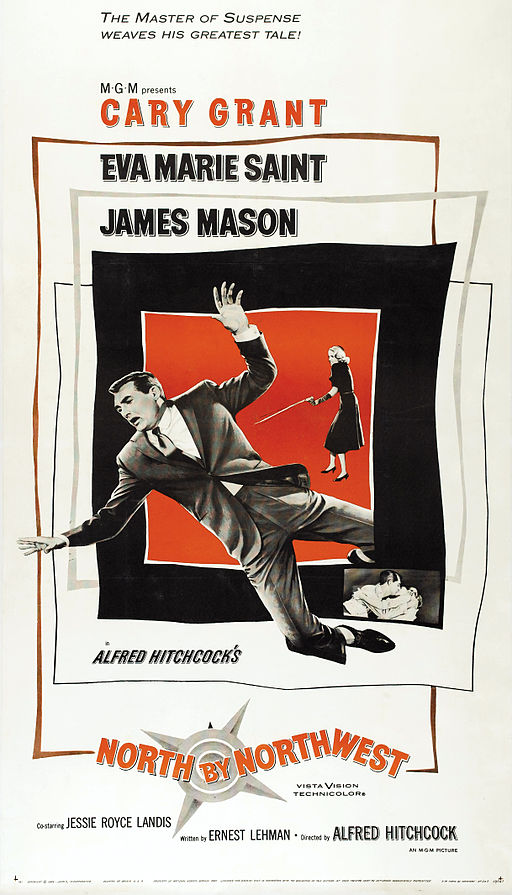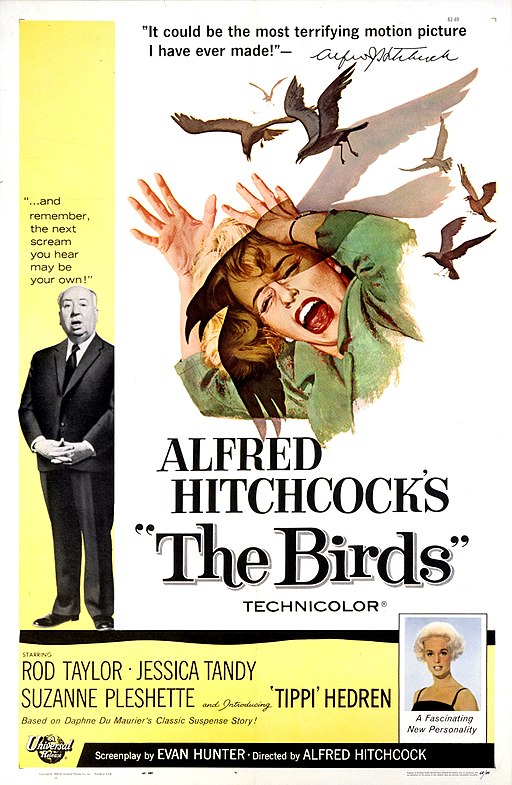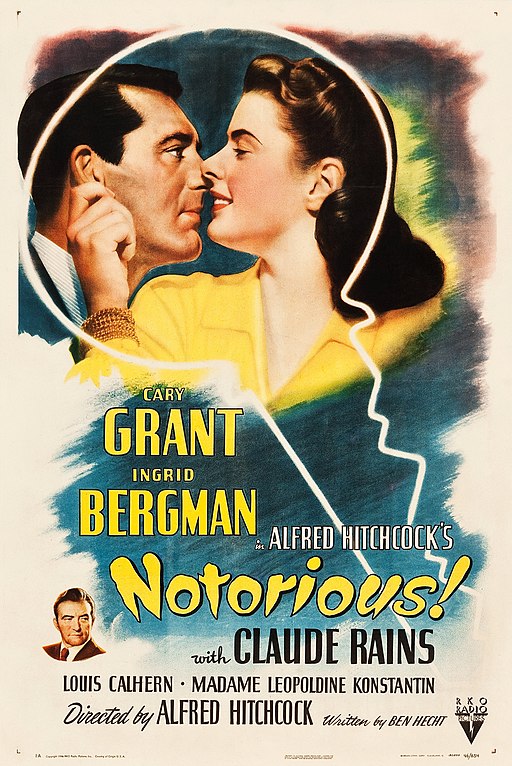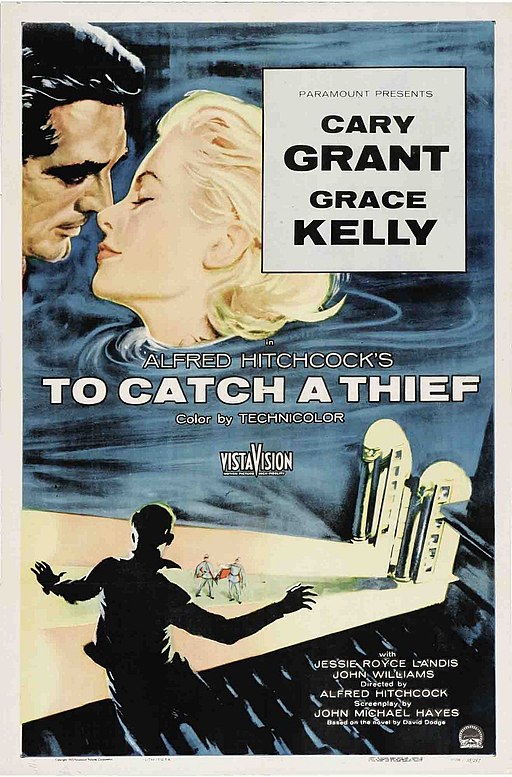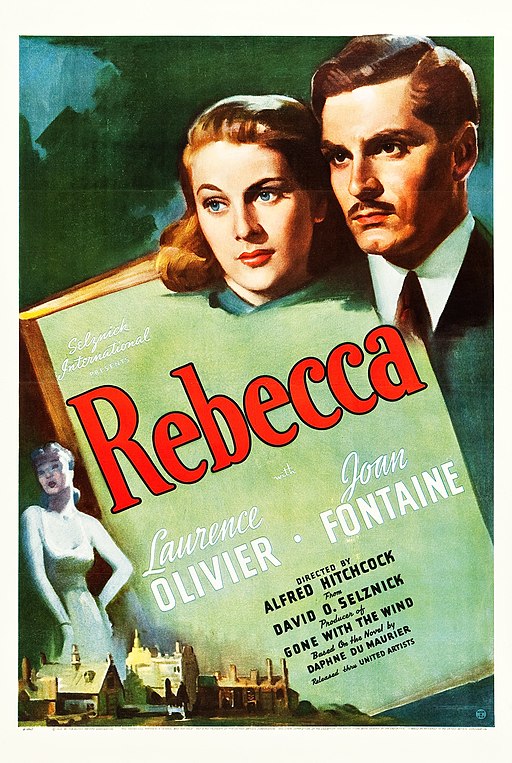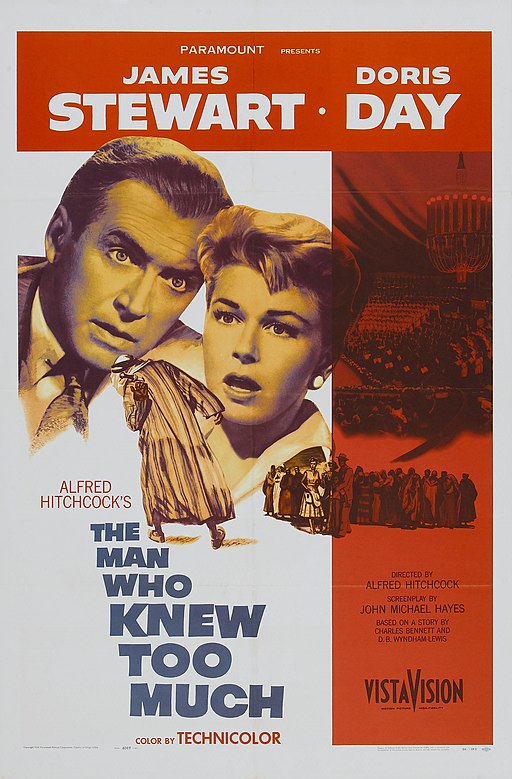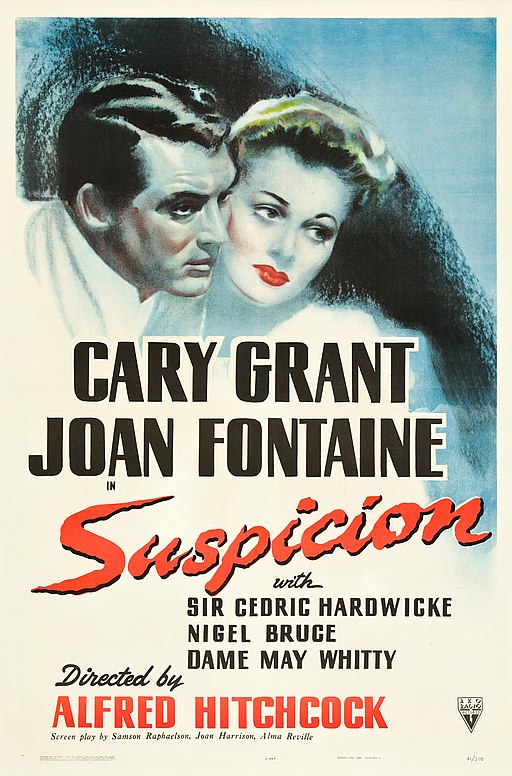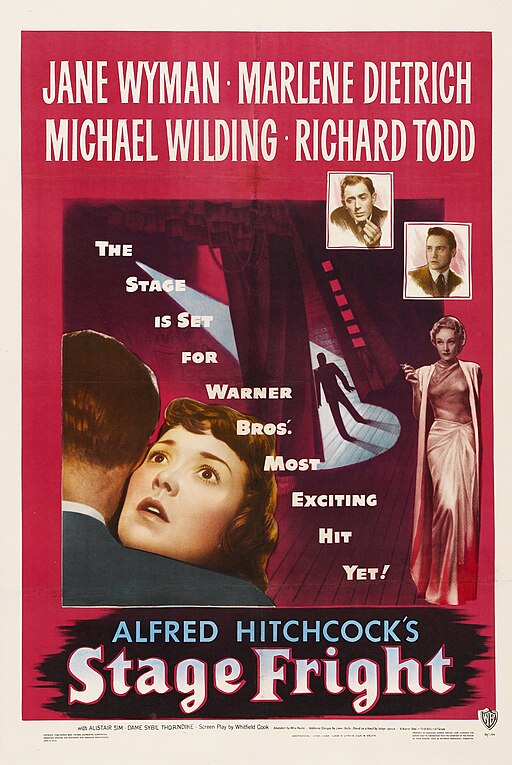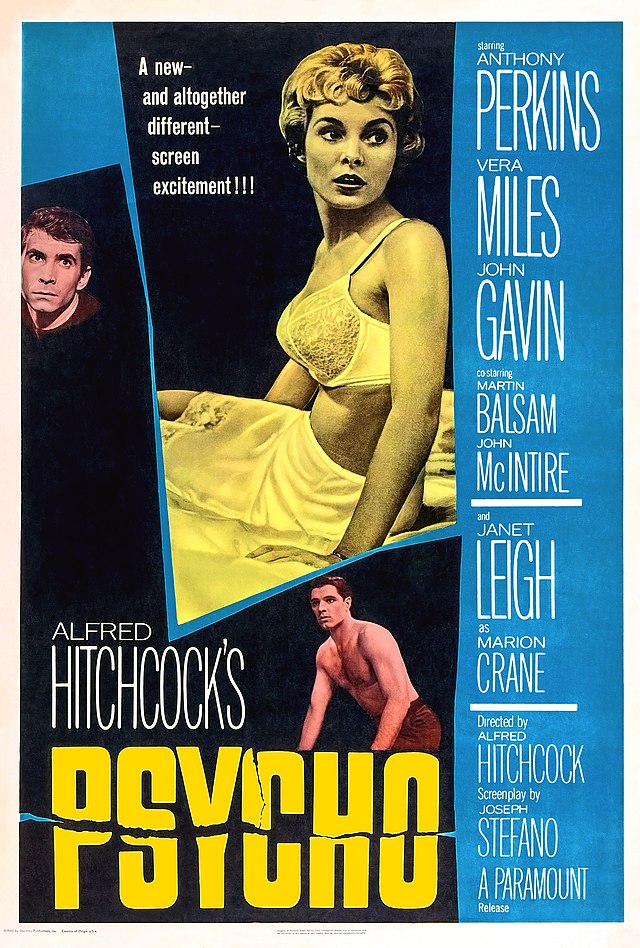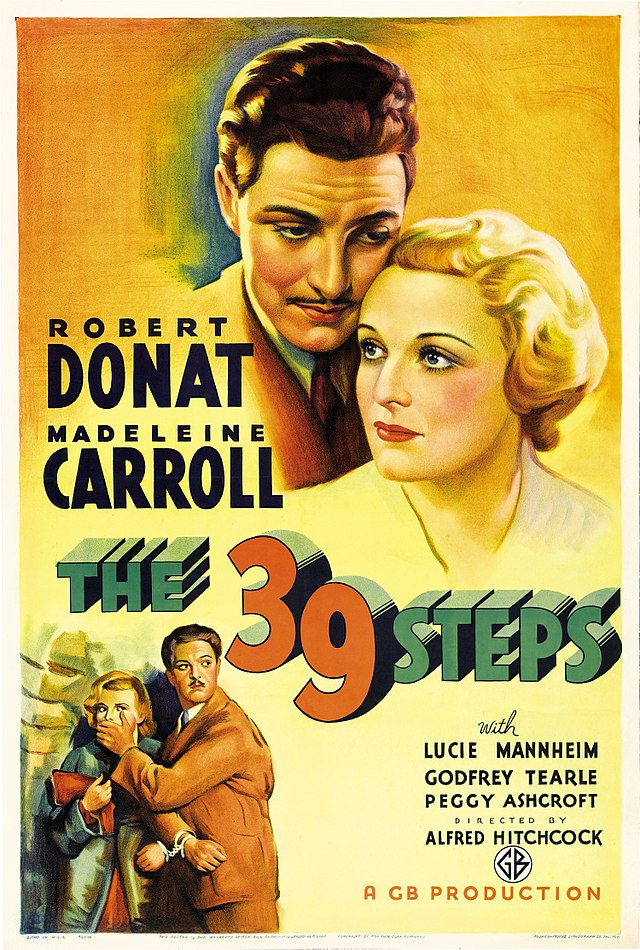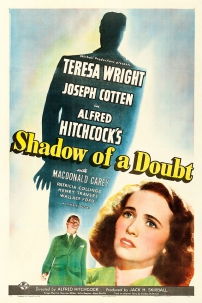Alfred Hitchcock
back| Full Name | Sir Alfred Joseph Hitchcock |
| Born | August 13, 1899 |
| Birthplace | Leytonstone, Essex, England |
| Died | April 29, 1980 |
| Buried | Cremated, ashes scattered in the Pacific Ocean |
| Married to | Alma Reville |
| Children | Patricia Hitchcock |
| Notable films | Psycho - Rear Window - Vertigo - North by Northwest - The Birds - Rebecca |
Alfred Hitchcock – The “Master of Suspense” director of all time
Alfred Hitchcock, born on August 13, 1899, in London, England, is celebrated as one of the most influential directors in the history of cinema. Starting his career in the 1920s, Hitchcock quickly developed a penchant for suspenseful and psychological thrillers. He made a significant impact in the British film industry with hits like "The 39 Steps" (1935) and "The Lady Vanishes" (1938).
Seeking broader horizons, Hitchcock moved to Hollywood, where he directed "Rebecca" (1940), winning the Academy Award for Best Picture. He became known for his distinctive style, intricate plots, and innovative filming techniques. Films such as "Psycho" (1960), "Vertigo" (1958), and "Rear Window" (1954) are testament to his mastery in blending suspense, drama, and psychological complexity.
Hitchcock was a pioneer in creating audience engagement, often appearing in brief cameos in his films. His contribution to cinema earned him the AFI's Life Achievement Award and the Irving G. Thalberg Memorial Award. Despite facing health issues in his later years, Hitchcock’s legacy endures, as his films continue to captivate audiences and inspire filmmakers worldwide. He passed away on April 29, 1980, leaving behind a monumental impact on the film industry.
Alfred Hitchcock was often referred to as "The Master of Suspense," a nickname that aptly reflects his unparalleled ability to create intense, thrilling, and suspenseful cinematic experiences. His films are renowned for their psychological complexity, innovative camera techniques, and his ability to evoke a deep sense of unease and anticipation in the audience.
Related
Alfred Hitchcock – Biography, analysis of his work and all his movies
Sir Alfred Joseph Hitchcock was an English film director and producer, widely regarded as one of the most influential and pioneering figures in the history of cinema. Born on August 13, 1899, in Leytonstone, Essex, England, he grew up in a working-class family and developed an early interest in filmmaking.
Hitchcock began his career in the film industry in the 1920s, working in various capacities including as a title card designer, writer, and assistant director. His directorial debut came in 1925 with "The Pleasure Garden," and he quickly established himself as a master of suspense and psychological drama. In 1926, he directed "The Lodger: A Story of the London Fog," which is widely considered his first masterpiece.
Throughout the 1930s and 1940s, Hitchcock continued to refine his craft and solidify his reputation as a master filmmaker. Some of his notable films from this period include "The 39 Steps" (1935), "The Lady Vanishes" (1938), and "Rebecca" (1940), which won the Academy Award for Best Picture.
In the 1950s, Hitchcock moved to Hollywood and continued to produce a string of successful and critically acclaimed films. His collaboration with actor James Stewart resulted in some of his most famous works, including "Rear Window" (1954), "Vertigo" (1958), and "North by Northwest" (1959).
Hitchcock's innovative techniques in storytelling, editing, and visual composition had a profound impact on the film industry, and his films often explored themes of obsession, guilt, and the duality of human nature. His use of suspense and psychological tension became trademarks of his work, earning him the nickname "The Master of Suspense."
Off-screen, Hitchcock was known for his dry wit and love of practical jokes, although he also had a reputation for being controlling and demanding with his actors. He was married to Alma Reville, a film editor, screenwriter, and director, and they had one daughter, Patricia Hitchcock, who appeared in several of his films.
Hitchcock's prolific career spanned six decades, during which he directed more than 50 feature films. He received numerous awards and honors for his contributions to cinema, including the AFI Life Achievement Award, the Irving G. Thalberg Memorial Award, and a knighthood from Queen Elizabeth II in 1980.
Hitchcock died on April 29, 1980, at the age of 80. He was cremated, and his ashes were scattered in the Pacific Ocean. His legacy lives on, and his films continue to be studied, celebrated, and enjoyed by audiences around the world.
Alfred Hitchcock – All his movies
1920s:
- The Pleasure Garden (1925): A silent film about the misadventures of two chorus girls.
- The Mountain Eagle (1926): A silent film set in Kentucky, centered around a man wrongfully accused of a crime. (This film is considered lost.)
- The Lodger: A Story of the London Fog (1927): A silent thriller about a landlady who suspects her new lodger is a serial killer.
- The Ring (1927): A silent romantic melodrama about a love triangle between a boxer, his wife, and his rival.
- Downhill (1927): A silent drama about a young man who is expelled from school and faces a downward spiral in life.
- The Farmer's Wife (1928): A silent romantic comedy about a widowed farmer seeking a new wife.
- Easy Virtue (1928): A silent film based on a Noël Coward play about a woman facing societal scorn after a scandalous divorce.
- Champagne (1928): A silent comedy about a rich girl who learns the value of money when her father pretends they’ve gone bankrupt.
- The Manxman (1929): A silent romantic drama about a love triangle between two friends and a woman in a small fishing village.
1930s:
- Blackmail (1929): Hitchcock’s first sound film, a thriller about a woman who kills a man in self-defense.
- Juno and the Paycock (1930): A drama based on a play by Sean O’Casey, centered around a poor Dublin family.
- Murder! (1930): A mystery about an actor who investigates a murder to prove a woman’s innocence.
- The Skin Game (1931): A drama about two feuding families.
- Rich and Strange (1931): A comedy-drama about a couple who go on a disastrous world cruise.
- Number Seventeen (1932): A thriller about a man caught up in a jewel heist.
- The Man Who Knew Too Much (1934): A suspense thriller about a couple whose daughter is kidnapped to prevent them from revealing a murder plot.
- Waltzes from Vienna (1934): A musical drama about Johann Strauss II.
- The 39 Steps (1935): A thriller about a man on the run after being falsely accused of espionage.
- Secret Agent (1936): A spy thriller about a British man sent to Switzerland during World War I.
- Sabotage (1936): A suspense film about a woman discovering her husband’s terrorist plot.
- Young and Innocent (1937): A thriller about a man trying to clear his name of a murder charge.
- The Lady Vanishes (1938): A mystery about a woman who disappears on a train, and the young woman’s quest to find her.
- Jamaica Inn (1939): A period drama about a young woman who discovers a group of shipwreck plunderers.
1940s:
- Rebecca (1940): A romantic thriller about a young bride who is overshadowed by her husband’s first wife.
- Foreign Correspondent (1940): A spy thriller about an American reporter who uncovers a Nazi spy ring in Britain.
- Mr. & Mrs. Smith (1941): A screwball comedy about a couple who discovers their marriage isn’t valid.
- Suspicion (1941): A psychological thriller about a woman who suspects her husband is planning to murder her.
- Saboteur (1942): A thriller about a man falsely accused of sabotage who goes on the run.
- Shadow of a Doubt (1943): A psychological thriller about a young woman who suspects her uncle is a serial killer.
- Lifeboat (1944): A drama set in a lifeboat in the North Atlantic after a ship is sunk by a U-Boat.
- Spellbound (1945): A psychological mystery about a woman who falls in love with an amnesiac accused of murder.
- Notorious (1946): A romantic thriller about a woman asked to spy on a group of Nazis in South America.
- The Paradine Case (1947): A courtroom drama about a barrister who falls in love with a woman accused of murder.
- Rope (1948): A thriller about two men who murder a classmate and host a dinner party with the body hidden in the room.
- Under Capricorn (1949): A historical drama about a man’s return to Australia and his involvement with a troubled woman.
1950s:
- Stage Fright (1950): A thriller about an actress who helps her boyfriend when he is accused of murder.
- Strangers on a Train (1951): A psychological thriller about two men who "swap" murders.
- I Confess (1953): A drama about a priest who becomes a murder suspect when he refuses to break the seal of confession.
- Dial M for Murder (1954): A thriller about a husband’s plot to murder his unfaithful wife.
- Rear Window (1954): A thriller about a wheelchair-bound photographer who suspects his neighbor of murder.
- To Catch a Thief (1955): A romantic thriller about a former cat burglar trying to catch a new thief to clear his name.
- The Trouble with Harry (1955): A black comedy about a dead body that keeps appearing and disappearing in a small town.
- The Man Who Knew Too Much (1956): A thriller about a family caught up in an assassination plot while vacationing in Morocco.
- The Wrong Man (1956): A drama based on the true story of a man wrongly accused of robbery.
- Vertigo (1958): A psychological thriller about a retired police detective suffering from acrophobia and obsessed with the woman he is hired to follow.
- North by Northwest (1959): A spy thriller about a man mistaken for a government agent and pursued across the United States.
1960s:
- Psycho (1960): A psychological horror-thriller about a secretary who embezzles money and checks into a remote motel run by a disturbed innkeeper.
- The Birds (1963): A horror-thriller about a series of unexplained violent bird attacks in a small California town.
- Marnie (1964): A psychological thriller about a man who marries a kleptomaniac and tries to uncover her past.
- Torn Curtain (1966): A Cold War thriller about an American scientist who pretends to defect to East Germany.
- Topaz (1969): A spy thriller based on the novel by Leon Uris about a French intelligence agent uncovering Soviet espionage during the Cuban Missile Crisis.
1970s:
- Frenzy (1972): A thriller about a man wrongly accused of being a serial killer in London.
- Family Plot (1976): A dark comedy about a fake psychic and her boyfriend who get involved in a kidnapping.
Family Plot was Alfred Hitchcock's final film before his death in 1980.
Analysis of Alfred Hitchcock’s direction style:
Alfred Hitchcock possessed a distinctive and innovative directorial style that left an indelible mark on the film industry. His films are renowned for their psychological depth, meticulous craftsmanship, and suspenseful storytelling. Below is a comprehensive analysis of Hitchcock’s directorial style:
Visual Storytelling:
Hitchcock was a master of visual storytelling. He believed in telling his stories primarily through images, and his meticulous shot compositions, innovative camera movements, and keen attention to detail all served this purpose. He was known for his use of storyboards to meticulously plan every shot before filming.
Suspense and Tension:
Hitchcock was famously known as the "Master of Suspense." He had a unique ability to create intense suspense and tension in his films. Hitchcock would often provide the audience with information that the characters on screen did not have, creating a sense of anticipation and anxiety. Films like "Rear Window," "Psycho," and "Vertigo" are prime examples of his expertise in this area.
Themes and Motifs:
Hitchcock’s films frequently explored themes of obsession, guilt, voyeurism, and the duality of human nature. He had a fascination with the macabre and the psychological, and this is evident in the recurring motifs found in his work, such as birds, stairs, and the use of mirrors to reflect the dual nature of his characters.
The Hitchcock Blonde:
One of the most famous elements of Hitchcock’s directorial style is his penchant for casting cool, blonde, and seemingly aloof female leads. These "Hitchcock Blondes," as they came to be known, played central roles in many of his films, embodying a combination of sensuality, mystery, and vulnerability.
Cameos:
Hitchcock was known for making brief cameo appearances in his own films, a trademark that became a fun Easter egg for audiences.
Use of Music:
Hitchcock made innovative use of music to enhance the mood and atmosphere of his films. He collaborated closely with composers like Bernard Herrmann to create memorable scores that played a vital role in building suspense.
Psychological Complexity:
Hitchcock’s films are marked by their psychological depth. He delved into the minds of his characters, exploring their fears, desires, and dark sides. His characters are often complex, and the psychological tension often plays out in dramatic and suspenseful ways.
Innovation and Experimentation:
Hitchcock was not afraid to experiment and push the boundaries of cinema. He was known for trying new techniques, both in terms of storytelling and the technical aspects of filmmaking. For example, "Rope" was filmed in long takes to create the illusion of a single continuous shot, and "Psycho" featured one of the earliest uses of a toilet flushing on screen, breaking a longstanding taboo.
Control and Precision:
Hitchcock was known for his meticulous nature and his desire for control over every aspect of the filmmaking process. He planned his films down to the smallest detail, and he was known for his precision and perfectionism on set.
Legacy:
Hitchcock’s influence on the world of cinema is immense, and his innovative techniques and storytelling style have inspired countless filmmakers. His ability to merge artistic ambition with mass appeal has made his work enduringly popular and critically acclaimed.
Remarkable quotes from Alfred Hitchcock:
- "To make a great film, you need three things: the script, the script, and the script." - Highlighting his belief in the importance of a strong screenplay.
- "Suspense is like a woman. The more left to the imagination, the more the excitement. The lady vanishes, and the lady goes on living." - On creating suspense in films.
- "I always believe in following the advice of the playwright Sardou. He said, ‘Torture the women!’ The trouble today is we don’t torture women enough." - While this quote is controversial, it reflects Hitchcock’s penchant for putting his female characters through intense emotional and physical turmoil to heighten drama in his films.
- "The more successful the villain, the more successful the picture." - Emphasizing the importance of a strong antagonist in storytelling.
- "I am scared easily; here is a list of my adrenaline production: 1. small dogs, 2. policemen, 3. high places, 4. that my socks do not match." - A humorous glimpse into his personal fears.
- "A good film is when the price of the dinner, the theatre admission and the babysitter were worth it." - On what defines a film's success.
- "If it's a good movie, the sound could go off and the audience would still have a perfectly clear idea of what was going on." - Reflecting his belief in visual storytelling.
- "There is no terror in the bang, only in the anticipation of it." - On creating suspense.
- "Television has brought back murder into the home - where it belongs." - A darkly humorous take on the impact of television.
- "I have a perfect cure for a sore throat: cut it." - Another example of his macabre sense of humor.
- "Give them pleasure - the same pleasure they have when they wake up from a nightmare." - On the appeal of suspense and thriller films.
- "Ideas come from everything." - Encouraging a broad and open approach to seeking inspiration for filmmaking.
- "Always make the audience suffer as much as possible." - Reflecting his knack for building tension and keeping viewers on the edge of their seats.
- "Some films are slices of life, mine are slices of cake." - On his style of filmmaking.
- "Drama is life with the dull bits cut out." - His approach to storytelling and film editing.
Awards and Nominations for Alfred Hitchcock:
Academy Awards (Oscars)
- 1941: Nominated for Best Director for "Rebecca" (his only film to win Best Picture)
- 1945: Nominated for Best Director for "Lifeboat"
- 1955: Nominated for Best Director for "Rear Window"
- 1961: Nominated for Best Director for "Psycho"
Despite his significant impact on the film industry, Hitchcock never won a competitive Oscar for Best Director. He did, however, receive the Irving G. Thalberg Memorial Award in 1968 for his significant contributions to filmmaking.
Golden Globe Awards
- 1955: Won Best Director for "The Man Who Knew Too Much"
- 1964: Nominated for Best Director for "The Birds"
BAFTA Awards
- 1966: Nominated for Best British Art Direction (Colour) for "Marnie"
- 1972: Awarded the BAFTA Fellowship, the highest honor bestowed by the British Academy
Primetime Emmy Awards
Hitchcock was also recognized for his work in television with his anthology series "Alfred Hitchcock Presents."
Cannes Film Festival
- 1949: "The Paradine Case" was nominated for the Grand Prize of the Festival
- 1954: "Rear Window" was nominated for the Palme d'Or
- 1956: "The Man Who Knew Too Much" won the Grand Prize of the Festival
Venice Film Festival
- 1934: "The Man Who Knew Too Much" won the Mussolini Cup for Best Foreign Film
Directors Guild of America (DGA) Awards
- 1968: Received the DGA's Lifetime Achievement Award
Other Honors
- Awarded the American Film Institute's Life Achievement Award in 1979
- Knighted by Queen Elizabeth II in 1980, just a few months before his death
Though Hitchcock did not receive as many awards as might be expected given his profound influence on cinema, his films continue to be celebrated and studied, cementing his legacy as one of the greatest directors in film history.
TV series “Alfred Hitchcock Presents”:
"Alfred Hitchcock Presents" was a popular television anthology series hosted by Alfred Hitchcock himself. The series originally aired from 1955 to 1965, showcasing a variety of suspenseful, thrilling, and often ironic stories.
Format and Style
- Each episode began with an introduction from Hitchcock, setting the tone with his dry wit and unique delivery.
- The stories were typically standalone, with a twist ending or a moral lesson.
- The show featured a mix of original works and adaptations of short stories.
Episodes and Content
- The series spanned seven seasons and a total of 361 episodes.
- Episodes delved into genres such as suspense, mystery, and crime, with Hitchcock’s trademark psychological complexity.
- Notable actors, including Steve McQueen, Bette Davis, and William Shatner, made guest appearances.
Production
- Hitchcock directed 17 episodes himself, applying the same meticulous approach as he did in his films.
- The series showcased Hitchcock’s ability to create suspense and engage audiences, making effective use of the television medium.
Legacy
- "Alfred Hitchcock Presents" is remembered as one of the classic anthology series in television history.
- Its format and style influenced subsequent anthology series and helped establish the viability of the suspense and mystery genres on television.
- The series was revived in 1985, running for an additional four seasons, although without Hitchcock’s direct involvement (due to his death in 1980).
Recognition
- The series was nominated for numerous Emmy Awards during its original run, winning twice.
Alfred Hitchcock and his actors and actresses:
Alfred Hitchcock had a number of favorite actors and actresses with whom he enjoyed working repeatedly. He was known for developing strong professional relationships with certain performers, valuing their ability to convey complex emotions and contribute to the suspenseful atmosphere he sought to create in his films. Here are some of the actors and actresses that Hitchcock frequently collaborated with:
Actors
- James Stewart: Stewart appeared in four Hitchcock films, including "Rear Window" (1954), "Vertigo" (1958), "The Man Who Knew Too Much" (1956), and "Rope" (1948). His everyman persona made him a perfect fit for Hitchcock’s thrillers.
- Cary Grant: Grant starred in four Hitchcock films: "Suspicion" (1941), "Notorious" (1946), "To Catch a Thief" (1955), and "North by Northwest" (1959). Grant’s charm and sophistication complemented Hitchcock’s style well.
Actresses
- Grace Kelly: Kelly appeared in three Hitchcock films, including "Dial M for Murder" (1954), "Rear Window" (1954), and "To Catch a Thief" (1955). Hitchcock admired her beauty and elegance, which added a glamorous touch to his films.
- Ingrid Bergman: Bergman worked with Hitchcock on "Spellbound" (1945), "Notorious" (1946), and "Under Capricorn" (1949). Her talent and versatility made her one of Hitchcock’s favorite leading ladies.
- Kim Novak: Though she only worked with Hitchcock on one film, "Vertigo" (1958), her performance left a lasting impact and is frequently cited as one of the most iconic in Hitchcock’s filmography.
- Tippi Hedren: Hedren starred in "The Birds" (1963) and "Marnie" (1964). Hitchcock was instrumental in discovering Hedren and shaping her early career, though their professional relationship eventually became strained.
Hitchcock was known for his meticulous casting choices, seeking out actors and actresses who could bring his complex characters to life and contribute to the overall suspense and drama of his films. These collaborations resulted in some of the most memorable performances and films in cinematic history.
Alfred Hitchcock’s most successful movies:
1. Psycho (1960)
- Success Factors: The shocking twist, innovative storytelling, and masterful suspense made "Psycho" a groundbreaking film. Hitchcock’s decision to kill off the leading lady early in the movie was unprecedented, and the infamous shower scene became one of the most iconic moments in film history. Bernard Herrmann’s haunting score further amplified the film’s impact.
2. Vertigo (1958)
- Success Factors: The complex narrative, innovative camera techniques (including the famous "dolly zoom"), and the mesmerizing performances by James Stewart and Kim Novak contributed to its success. Over time, "Vertigo" has gained recognition as one of the greatest films ever made, with its themes of obsession and identity resonating with audiences and critics alike.
3. Rear Window (1954)
- Success Factors: The film’s unique setting (a single apartment complex), the voyeuristic theme, and strong performances by James Stewart and Grace Kelly captivated audiences. Hitchcock’s ability to build tension and suspense within the confined space showcased his directorial mastery.
4. North by Northwest (1959)
- Success Factors: The film’s blend of suspense, romance, and action, along with memorable performances by Cary Grant and Eva Marie Saint, and iconic scenes (such as the crop duster chase), contributed to its success. Its sophisticated plot and witty script set a high standard for the thriller genre.
5. The Birds (1963)
- Success Factors: The innovative special effects, the unconventional narrative (with no clear explanation for the birds’ behavior), and Tippi Hedren’s performance made "The Birds" a memorable and unsettling film. The movie’s ability to tap into primal fears helped it leave a lasting impact on the horror genre.
6. Dial M for Murder (1954)
- Success Factors: The film’s clever plot, the use of 3D (though it was eventually mostly shown in 2D), and strong performances by Ray Milland and Grace Kelly contributed to its success. Hitchcock’s expert handling of the suspenseful plot twists kept audiences engaged.
7. Notorious (1946)
- Success Factors: The film’s complex characters, the romantic tension between Cary Grant and Ingrid Bergman’s characters, and its espionage plot set against the backdrop of World War II made "Notorious" a standout film. Hitchcock’s use of long takes and close-ups added to the film’s intensity.
8. To Catch a Thief (1955)
- Success Factors: The glamorous setting on the French Riviera, the chemistry between Cary Grant and Grace Kelly, and the blend of romance, suspense, and humor made "To Catch a Thief" a hit. Hitchcock’s ability to create a light-hearted thriller without sacrificing suspense showcased his versatility as a director.

